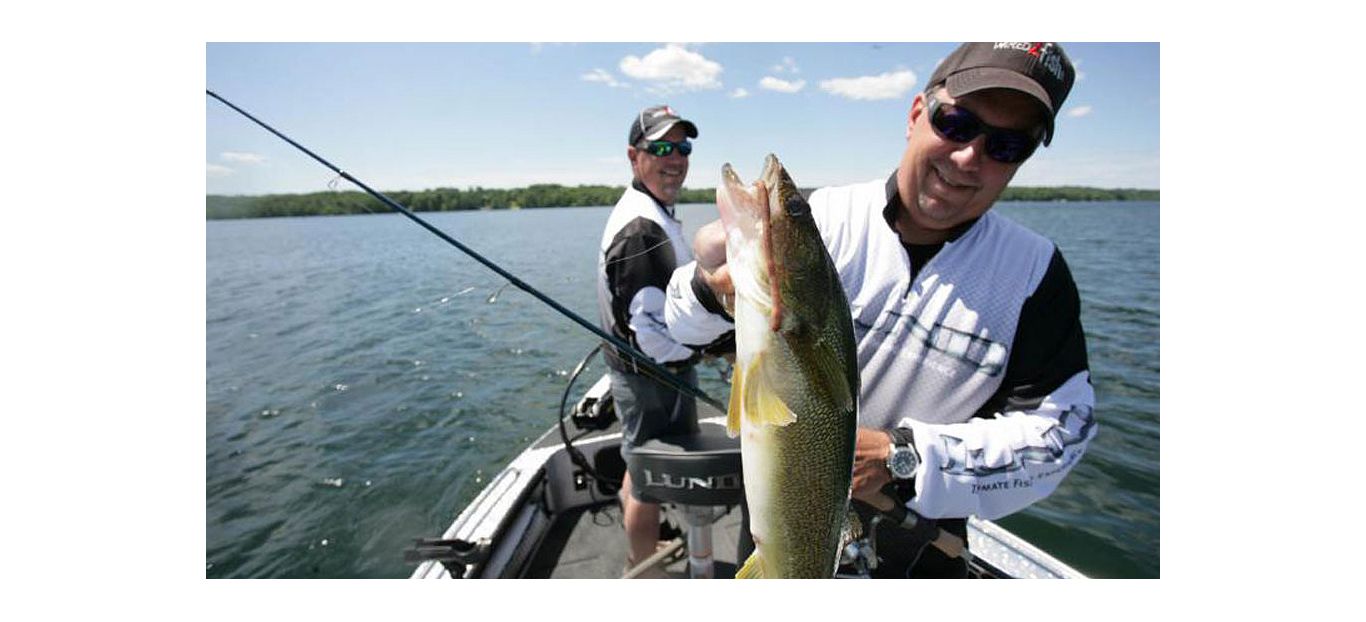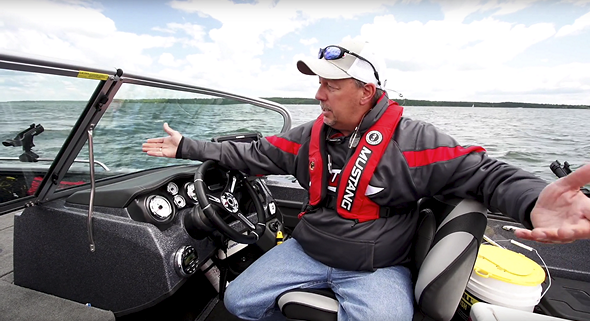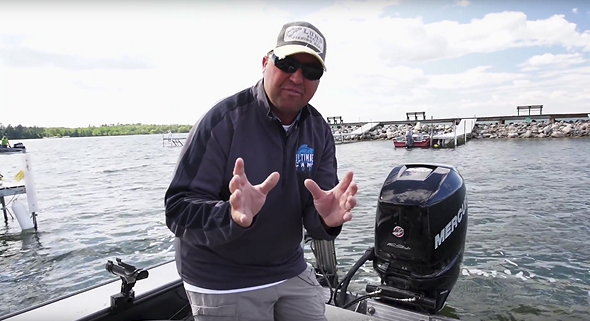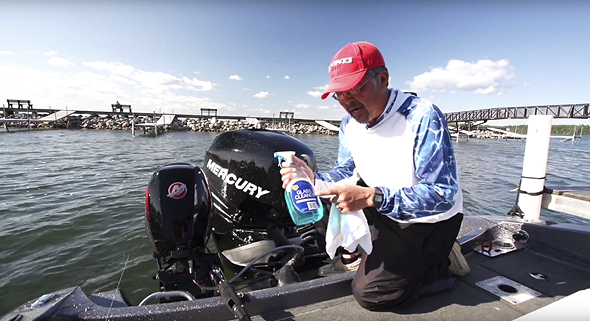Tips for Buying and Rigging the Best Fishing Boat
Tips For Buying And Rigging The Ultimate Fishing Boat

North to South, cabin fever has countless winter-weary anglers gearing up for warm-weather fishing adventures ahead. For some, that means buying a new boat, while others opt to trick out their current fishing platforms. Whichever camp you fall into, a few simple pointers can help you navigate the sea of choices in boats, motors and rigging options toward a dream machine that fits your needs.
"The process can seem overwhelming," say decorated touring pros, guides and noted freshwater experts Scott and Marty Glorvigen. "But if you start by identifying how and where you plan to use the boat, and stay focused on that, you’re already halfway there."
For starters, the Glorvigens suggest thinking about your favorite style of fishing. "Identify your target species and top tactics for tackling them," Marty says. "Then consider the waters you want to fish, and whether you typically fish solo or with family and friends."
Answers to these questions can guide your boat, outboard and rigging selections. For example, if solo catfishing expeditions on small rivers top your playlist, you probably don’t need a 22-foot deep-V set up for trolling big water. On the flip side, if you plan to chase walleyes on large lakes prone to heavy seas, a 12-foot, bare-bones flatbottom isn’t going to cut it.
"Also consider factors such as how far you plan to travel and the accesses you’ll launch from," he adds. "Don’t forget about your tow vehicle or storage space back home, either." On that note, remember that a trailer tongue and outboard can add several feet to a rig’s total length.
Use Lund’s online tool to find the best fishing boat for your needs
BOATS BY DESIGN
Marty boils boat styles into three basic options: tiller, single console and dual console, and notes that each one shines for different applications.
"A tiller excels for solo anglers and ultimate efficiency, because if you rig it right and load it properly, everything is right there with you, your baitwell, livewell, rod locker, tackle storage, main outboard, trolling motor and electronics," he says. "It’s truly a command center for serious fishing."

Speaking of sonar, Marty says being positioned directly atop the transducer allows pinpoint boat control on structure, bottom transitions and weed edges. "You can also drop your jig into the sonar cone and watch how fish react to it," he adds. "This is pretty tough to do when you’re sitting at a console."
Tillers also offer benefits from a safety standpoint, Marty notes. "You’re less likely to fall overboard fishing from the back of the boat than standing up on the bow," he says. Likewise, the stern provides a far more comfortable perch when traversing rough water than seating found farther forward.
"Probably the only downside of a tiller is you’re a little more exposed to the wind, splash and rain than in console boats," he admits. "But good rain gear mitigates that."

Single consoles offer a sheltered cockpit, along with other advantages. "There’s plenty of deck space, so you can move around the boat based on your style of fishing," explains Scott. "These boats are great if you do a lot of casting for muskies, pike or bass, especially with two or three anglers aboard."
Even when fishing alone, single consoles allow you to line up an arsenal of pre-rigged rods on the front deck, making it easy to toggle between presentations while figuring out what the fish want.
Since the bulk of single console fishing occurs from the foredeck, he suggests mounting a large-screen sonar and GPS plotter on the bow. "A wide-screen unit like a Lowrance HDS 10 offers great detail and is easy to see, even with your peripheral vision while you’re casting," he explains. "I’d rather have a smaller display on the dash and big screen up front any day."
If there’s a drawback to the single console design, it’s from the passenger side’s standpoint. "If it’s rough or rainy, your buddy might get a little wet," he cautions. "And he or she will have to deal with the wind. But hopefully the ride isn’t too long, and the fishing is worth it."

Dual consoles are the carriers of the inland fleet. They’re large, stable and capable of hauling mountains of gear plus a boatload of passengers."
They’re great if you do lots of fishing with family or friends and want to give them more shelter from driving rain, cold winds or even blistering sun than other boat styles," says Scott. "If you’re planning to pull water skiers or tubes, they’re also the way to go."
Likewise, a dually rules the waves for long runs and big-water trolling. If you want to cover 20 miles or more to reach the fishing grounds, then deploy a large trolling spread when you get there, this is your ticket.
On the downside, dual consoles are more expensive initially, though many offer excellent resale value. They are also more expensive to tow and operate than lighter, smaller vessels. They also limit you to larger accesses and water deep enough to accommodate a deep draft. "That being said, a sizable boat can still navigate some pretty tight quarters, when need be," Scott says.
When rigging a dual console, he recommends making the helm ground zero for electronics and boat control. Outfitting the cockpit with large, high-resolution sonar and GPS displays, along with controls for auxiliary propulsion, such as electric-steer trolling motors, are critical, since you’ll spend the bulk of your time in the wheelhouse.
SCOTT GLORVIGEN AND THE CORRECT OUTBOARD
POWER TO THE PEOPLE
No matter which style of boat you choose, selecting the perfect powerplant to push it across the waves is key. "Outboards come in all shapes and sizes, in options from 2 to 300 horsepower," Marty begins. "So what do you buy?"
The answer, he assures, rests with your style of fishing. "Bass anglers typically want a powerful main outboard like a 150- to 250-horsepower Mercury Pro XS for speed and performance," he says. "Multi-species anglers have even more options. For tiller or console boats where the main engine doubles as the trolling motor, four-strokes get the nod. They’re extremely quiet and you can troll them down to a standstill by adjusting your RPMs with the touch of a button."
To avoid under-powering your boat, he recommends running its maximum rated horsepower. "Getting too small an outboard is the single biggest reason for buyer’s remorse," he warns, adding with a grin, "You never hear anyone complain that his or her motor is too fast, or pops them on plane too quickly."
Along with ample horsepower, Marty advises furnishing your ride with worthy electronics capable of finding fish-holding honey holes, and fully detailing the underwater world on arrival. "Networking systems make it easy to sync data between bow, stern and console units, which is a big plus with both sonar and GPS," he says. "Lowrance’s new GoFree wireless technology even lets you view and control the HDS Gen2 or HDS Gen2 Touch units with a smartphone or tablet. This is a great way to share display information with everyone in the boat."
SHOP SMART
"Finding the right boat and rigging it to fit your needs requires a little thought, but it’s definitely worth the effort," says Scott, to which Marty wholeheartedly agrees. "Absolutely, he adds. "Because in the end, the more comfortable you are fishing the lakes you like to fish, the more you’re going to get out, and the better you’ll become as an angler."
See how boat style and rigging options aid live bait rigging tactics.
SCOTT GLORVIGEN LIVE BAIT RIGS FOR BASS AND WALLEYE
CONTACT INFORMATION
Glorvigen & Glorvigen LLC | 29 County Road 63, Grand Rapids, MN 55744 | sglorvigen@wired2fish | 218.301.9072
This content is free for publication. For questions or additional high-resolution photography, please contact -
All Creation Outdoor Media | 43866 Ash Ave., Harris, MN 55032 | [email protected] | 651.237.0159
Read expert tips on shopping for a new boat! Download our free guide to buying a boat today.
Get Updates
Sign up for our newsletter


